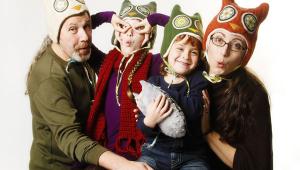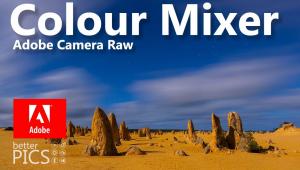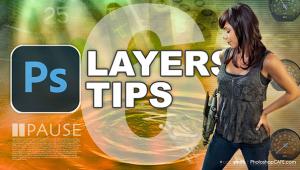How to Get Paid What You’re Worth as a Photographer: Taking Charge Of What To Charge For Your Photo Services

This column is not about what to charge, it’s about how to get paid what you’re worth as a photographer. Much has been said about the changing of the client/photographer relationship and most working pros agree that we are not in the same game anymore. Both as individuals and an industry, we need to try new and different techniques to take charge of what we charge.
If you truly feel you are losing ground on pricing and negotiating with clients then it is time to try something else. In many ways, we have to re-establish ourselves as professionals instead of just “vendors” and work hard to create or renew a profitable relationship with clients. With our contributors in this round-table discussion we will look at specific actions you can take, attitudes you can change, different questions you can ask—all toward a goal of improving your pricing and negotiating skills.
One clear message that came from this research is that you should be a member of a professional association. I know many photographers have let those renewal notices lapse or believe joining is still in the optional expense category. There has never been a time when professional membership is more crucial to your business than now since it will help you establish your positioning in the marketplace and fortify your attitude toward pricing your work.
Thanks to our contributors this month. For our readers to better understand the context of the thoughts they are expressing, here are the types of clients they work with: Paul S. Bartholomew (www.paulsbartholomew.com), corporate, editorial, and advertising; Kimberly Davis (www.kimberlydavisphotography.com), editorial and some corporate; Paul Nurnberg (www.nurnbergphotography.com), commercial, corporate, editorial, advertising (local and regional), and industrial; Jim Roof (www.jimroofcreative.net), architects, interior designers, real estate developers, and larger general contractors.

Shutterbug: How do you answer the client that just wants a “ballpark figure” or a “day rate”? What do you say to turn the conversation around to your economic needs and what the client really needs (i.e., usage)?
Jim Roof: I just tell them that photography is not a parts and labor kind of business. A photograph can be a snapshot taken with no thought or preparation or it can be an image that took days to plan and execute. Often I will ask the client what it is they are looking for. One approach that I have taken is to remind them that my job is to enhance their business. I take a two-pronged approach to the conversation by telling them that it could be detrimental to their goals if I failed to understand the importance of the assignment. Then, based upon that premise, I will ask if they could share with me a ballpark figure so that I can better understand the importance of this project.
I once asked a rather large architectural firm a question that caught them off guard. The project I was asked to shoot had already been shot by another person but the firm was not happy. I inquired, “Please tell me how important this is to you. I do not want to give you an estimate that fails to allow for the necessary time and attention to shoot this with uncompromising results. Is this something you just need documented or do you want to go at this with no compromises?” They chose the latter. I got the assignment and the project has been published numerous times and garnered award after award for their architectural design work.
Paul Nurnberg: First, I’ll never give any figure on the initial phone call (assuming a phone call). I’ll always ask for details that will make the estimate more accurate and try to get a budget. If they say they don’t have one then I will often say, “There are many ways to produce a shoot like this. The price range could be $1000, $3000, or $10,000. What range are you thinking this would be in?” And of course ask how the images will really be used.
Kimberly Davis: I just tell them that prices are different for every project so I don’t have a flat day rate because of that reason. My prices are based on how the images will be used and where they will be used as well and that actually saves the client money in the long run. I will ask questions to learn more about what their needs are and what is involved in the project and then I will put an estimate together.
Paul S. Bartholomew: I’ll sometimes send a rough (not formal) estimate based on a fictitious project. This way they can’t go crazy with expectations and the shot list. It’s important to still at least try to get as much info as possible from the client such as potential usage and subject matter. I’ll even give different variations of options because I find that people like to be given options to think about. If it’s within their comfort zone, then we work out a shot list for a formal estimate.

SB: What resources have you used or can recommend (books, websites, software, associations) to help our readers set up a pricing structure for their usage fees and production expenses?
Paul Nurnberg: ASMP and APA both are great resources. Being an active member in a local chapter is the absolute best and both organizations have good website info as well. I often call upon members of our local ASMP chapter to bounce pricing ideas off of. John Harrington’s book, Best Business Practices for Photographers, is very good also.
Jim Roof: That is a tough question. Each part of the country has different pricing due to various factors. I tend to find that there is no “one size fits all” for this business. For me, I just keep my eyes and ears open and pick up on clues that the market presents to me. Certainly there should be a clear outlook on production costs regardless of what you shoot. Licensing is another thing altogether. For the architectural photographer who works directly with design clients there is not a lot of room for getting into separate licensing fees. Typically those fees are all rolled into one fee that is based upon the assignment complexity and the number of images.
Licensing fees are definitely an issue when it comes to third parties, however. Some have recommended using stock photography websites as a tool, but again, they will only spit out a “one size fits all” price. A photo of Sasquatch hugging Elvis will be priced the same as a shot of a blank wall. You have to look at the client and ascertain if the image is going to be an important part of their business, or if it is just something that they think of as a commodity. I will say this, there are two ways for a photographer to starve to death—charging too little or charging too much. If everyone says “yes” to your pricing, then you are not charging enough. If everyone says “no,” then you are charging too much.
I think a healthy fee structure should get about 40 to 50 percent of potential clients rejecting the proposal. That is hard for someone to deal with when they are starting out, but in the long run, the photographer who prices so low that nobody can resist will end up working twice as hard for the same results as the photographer who charges twice as much and works half as hard. Everyone has to find where their work fits in. Finally, I would strongly encourage all photographers to do something, anything, to set their work apart from the field. Digital cameras have turned anyone with a few thousand dollars into a “photographer” and that has done a lot of damage to the status of both the art and the business.
Kimberly Davis: I’ve used software like fotoQuote and looked at comparable stock photography sites. ASMP has helpful paperwork on their website. The Wonderful Machine blog has example estimates they’ve put together plus I have good friends who are photographers so I can bounce things off of them.
Paul S. Bartholomew: I read posts on aPhotoEditor.com and ASMP has good resources on their website. I also use BlinkBid’s bid consultant and fotoQuote but try to be realistic when looking at their numbers. Most of all, I reach out to other photographers because it helps to communicate with those who specialize in the same type of photography.

SB: How do you package your photography bids/estimates to make the best presentation that will (hopefully) convince the client that they need to hire you?
Jim Roof: I have never been very fancy with bids and estimates. I just present the estimate with licensing terms clearly stated and each item described in plain and simple terms. One thing that I stopped doing some years ago was using the term “day rate.” I now simply use the term “creative fee” or “fee for photography.” As I get older and more experienced I am able to produce better images in less time than I could 10 years ago. Some of this is due to digital photography but most of it is due to the development of a keener sense of composition and a very quick assessment of what lighting will be needed to make the shot work. That said, I see no reason for opening myself up for charging less simply because I am faster and better than I used to be. So, the term “day rate” never appears on anything I do.
Paul S. Bartholomew: I use BlinkBid for the estimate breakdown but will add a cover letter explaining my approach to the project and other details. It shows that I put effort and thought into it. I’ll also attach the shot list and present everything as a PDF.
Kimberly Davis: My estimates are sent as a PDF on my business letterhead, which makes a nice presentation, and everything is branded. Sometimes I’ll attach a PDF of comparable images that I’ve done and sometimes I’ll make a web gallery specific for them.
Paul Nurnberg: I try to include as much detail as possible. It does depend on the client. Is it an art buyer for a large ad agency or a secretary calling 30 photographers for the lowest price? The larger the job, the larger the treatment I will give to the estimate.
SB: What are your best tips for negotiating when the client balks at your price?
Paul Nurnberg: I would like to read what the other photographers have to say about this! Of course I point out my (more than 25 years of) experience and tell them how I will make their job easier, and less, not more, stressful. I also show them images that will make them feel comfortable that I am the best photographer for the job.
Jim Roof: First, be willing to be rejected. If one is not willing to be rejected then the price becomes emotionally entangled and decisions could be swayed by issues of self-worth or wanting to be liked. I want to be liked, too, but not so much that I end up negotiating things down to ridiculous levels. Second, have something in your estimate that you are willing to give up in negotiations. Perhaps the client balks at the estimate and you counter with: “Have you considered paring your shot list down a bit? I would suggest you prioritize your list and let me know which images are critical. I will estimate based upon these critical views and, if time allows, I may be able to get one or more less important views done for you and price them as individual licensing fees at a discounted rate.” There have been times when these little “add-ons” have added up quite a bit. Again, this is for my typical building design clients. This approach will not work with every photographer. Finally, remind the client that bad photography is worse than no photography. A good photograph is an investment that should yield returns. This is horribly clichéd, but true nonetheless—you only have one chance to make a first impression. That first thing people see when they look at a website, proposal, or brochure is the photograph. That first image sets the initial tone. It better be good.
Kimberly Davis: I’ve been known to say from the get-go that I am not the cheap photographer in town before I ever send the estimate, especially for food photography in Austin. If they’re looking for the lowest bidder I’m not going to be it. However, I’m delivering something that no one else can and I’ll do everything I can to make the best images possible for them. I’m in it for the long term. My job is to solve a problem and there is a lot of creativity involved as well. I don’t just show up and take pictures, we talk about it, and there are plans made and flexibility as well. A lot of the time estimates are revised, sometimes more than once. It’s always a thousand times easier if they just tell me their budget but that doesn’t always happen. Usually we’ll come to an agreement where everyone is happy and typically if it’s a situation where they balk at my price then obviously I’m not the kind of photographer they’re looking for anyway.
Sometimes I can negotiate over usage rights. A lot of the time they don’t need as much as they think they do and sometimes giving them more is exactly what they need. It’s about problem solving and every situation is different. I’m almost always willing to find a way to work with them that doesn’t undercut pricing and that comes back to building relationships.
Paul S. Bartholomew: First, pick up the phone and communicate. E-mail can be a disadvantage when it comes to picking up on the person’s tone. Second, get the client’s thoughts on the estimate and see where things can be revised. Third, fees should never magically drop without reason. Something has to be adjusted with details such as shot totals and usage. Finally, do not expect to win them all. I lose more than I win. So many factors come into play.
- Log in or register to post comments
















































